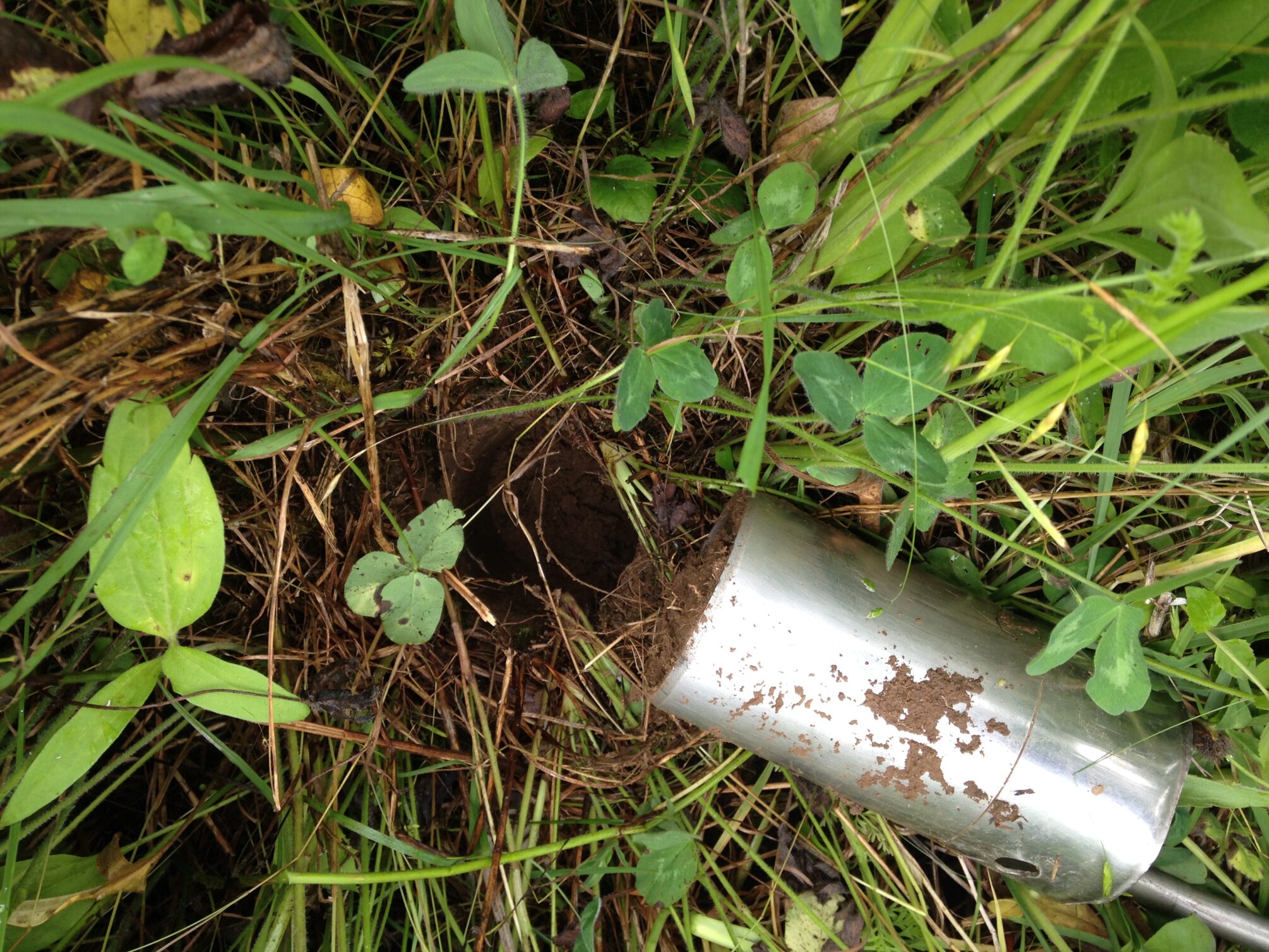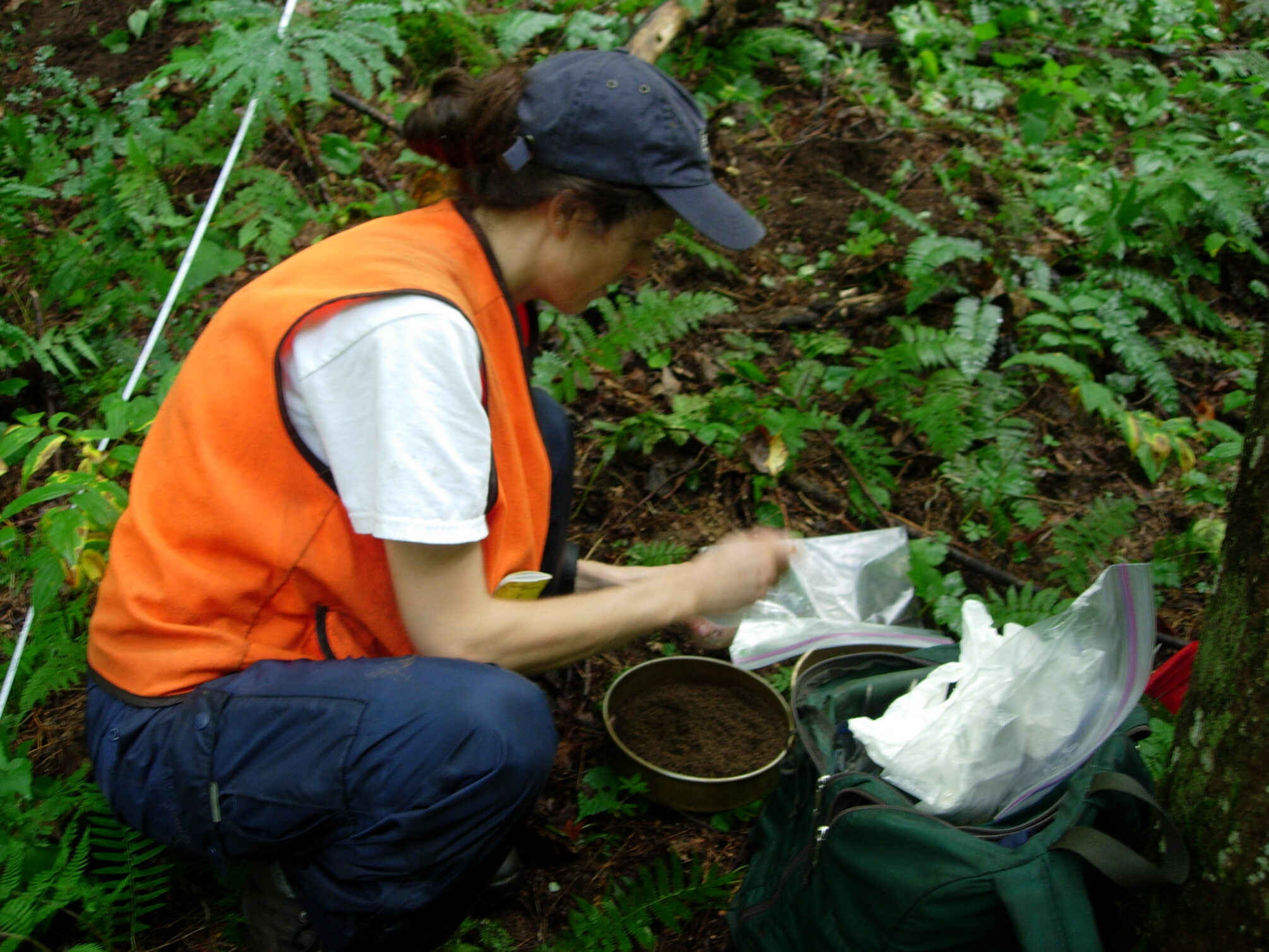
An LTER cross site synthesis effort reveals that soil carbon availability determines nitrogen mineralization and nitrification rates across a wide diversity of terrestrial ecosystems.
Ecosystems across the globe are wildly different, from the Arctic tundra to midwestern grasslands to temperate northeastern forests. Yet a new paper shows that across fourteen varied terrestrial sites in the Long Term Ecological Research Network, the amount of soil carbon determines soil nitrogen biogeochemistry by shifting the balance between nitrification and nitrogen mineralization. The result is important for understanding the fate of nitrogen in ecosystems across the globe, and the link between carbon and nitrogen has implications for soil carbon storage and emission.
Dry, wet, cold, warm: soil carbon influences nitrogen across diverse sites
Finding a common pattern in soil biogeochemistry across ecosystem types seemed unlikely, says Dr. Allison Gill, lead author of the new paper published in Biogeochemistry Letters. Vastly different processes control nutrient transformations in boreal forests than in the desert. But, once she and coauthors started looking across ecosystems, they found that in soils with little available carbon, rates of nitrogen mineralization and nitrification were closely linked, but in soils with more available carbon, the two processes became uncoupled.
The sites, including fourteen terrestrial sites part of the LTER Network, cover a huge geographic range: the pattern held in Arctic sites, the Everglades, urban ecosystems, deserts in the Southwest, northeast forests and more. “I don’t think anyone, ourselves included, would argue that the only thing controlling the relationship between nitrification and mineralization is soil carbon,” says Dr. Allison Gill, lead author of the study, hinting at the immense complexity of soil biogeochemistry across space. But the pattern still shone through. Despite differences between locations, soil carbon still exerted significant influence on the relationship between nitrogen mineralization and nitrification at every site.
This pattern might give scientists, policymakers, and managers a starting point when thinking about global problems such as nutrient pollution or carbon storage in soil. For example, increasing soil carbon—an oft touted carbon offsetting strategy—may uncouple nitrification and mineralization in some systems, reducing nitrification rates. Nitrification is a major source of nitrous oxide emissions, a greenhouse gas three hundred times more potent than carbon dioxide. “What we’re showing is that [carbon] has a very direct impact on nitrogen transformations and potentially nitrogen availability in soils, as well as retention and loss,” says Dr. Gill.

Credit: Dr. Ashley Keiser, CC BY-SA 4.0.
LTER events have synthesis in mind
Data are, of course, essential to broad scale synthesis projects such as this one; fortunately, the LTER Network maintains publicly available, high quality datasets in spades. More difficult, however, is collecting the expertise required to meld different datasets from unrelated projects across diverse sites to explore patterns and uncover meaningful relationships.
For this project, Dr. Gill and her colleague Dr. Ashley Keiser convened a workshop at the 2018 LTER All Scientists’ Meeting designed to bring experts from across the network together to explore their hypothesis. “The first step was using the workshop at the All Scientists meeting as a launching point for saying, well, do any patterns exist at other sites?,” says Dr. Keiser.
The back and forth between experts in the workshop was a crucial step towards the final paper. “At the [start of the] meeting, we were still making our comparisons within specific sites,” says Dr. Keiser, noting that the initial idea was to compare patterns between individual treatments within specific sites rather than comparing patterns between ecosystems. “We realized quickly that trying to take a broader approach would be a much better scale for this work,” adds Dr. Gill. “The feedback that we got in discussions in the workshop really helped push us in that direction.”
A clear hypothesis begets successful synthesis
Drs. Gill and Keiser ascribe the success of their All Scientists’ Meeting workshop and, ultimately, the whole project, to having a really clear hypothesis from the outset. “We had a very specific question,” says Dr. Gill. “It was hypothesis-driven science.”
That hypothesis, that soil carbon controls nitrogen mineralization and nitrification rates, emerged from a site-specific study at the Coweeta LTER. Dr. Keiser led the Coweeta study, where she and coauthors explored the biogeochemical differences between disturbed and undisturbed forest plots. The carbon-nitrogen link was the strongest relationship among a variety of variables they examined.
The theory behind the phenomena hinted that carbon might influence mineralization and nitrification coupling in other ecosystems beyond Coweeta, says Dr. Keiser. “This link between carbon and nitrogen comes down to organismal demand for certain nutrients,” says Dr. Keiser, competition that is not specific to Coweeta but present in all ecosystems. The next step was to see if the same pattern was detectable anywhere else.

Credit: Dr. Ashley Keiser, CC BY-SA 4.0.
Scaling up
This process underscores the strength of the LTER Network’s structure. Exploratory studies such as the Coweeta example allow researchers to explore myriad factors in a specific ecosystem—“fishing,” as Dr. Gill calls it, for new patterns or processes. LTER sites are somewhat autonomous, with latitude to explore patterns and processes relevant to each specific site—greatly increasing their chance of novel discovery.
Yet as part of the LTER Network, sites also must conduct research in certain core areas—research foci designed to facilitate comparison across sites. Plus, LTER sites are part of a network that encourages and actively facilitates conversations across sites. The LTER Network holds science focused network events such as the triennial All Scientists’ Meeting, the annual Science Council Meeting, and regular webinar series, that are designed to keep researchers in conversation with each other and up to speed on trends, techniques, and findings across the network.
The result of these initiatives is coordination across sites that allows researchers such as Drs. Gill and Keiser to develop and test hypotheses that span multiple ecosystems. “The outcomes from cross-site synthesis highlight the value of publicly available data for exploring ecological patterns across scales and ecosystems as well as the value of partnering with scientists across the Network. In our All Scientists Meeting workshop, we quickly realized that we needed to significantly narrow our study question, and in doing so, were able to tell a really great story.” says Dr. Keiser of her experience with LTER synthesis. “Now, we can use the pattern demonstrated at a large scale to ask new questions that peel back more layers.”
by Gabriel De La Rosa










